The document discusses the Internet of Things (IoT), describing it as a network of interconnected devices embedded with technology that allows for data collection and exchange, improving efficiency and enabling automation across various sectors. It outlines the evolution of the internet, the impact of IoT on different industries, and the advancements in enabling technologies such as RFID, sensors, and cloud computing. Furthermore, predictions suggest significant growth in the IoT market, with an expected 50 billion connected devices by 2020.
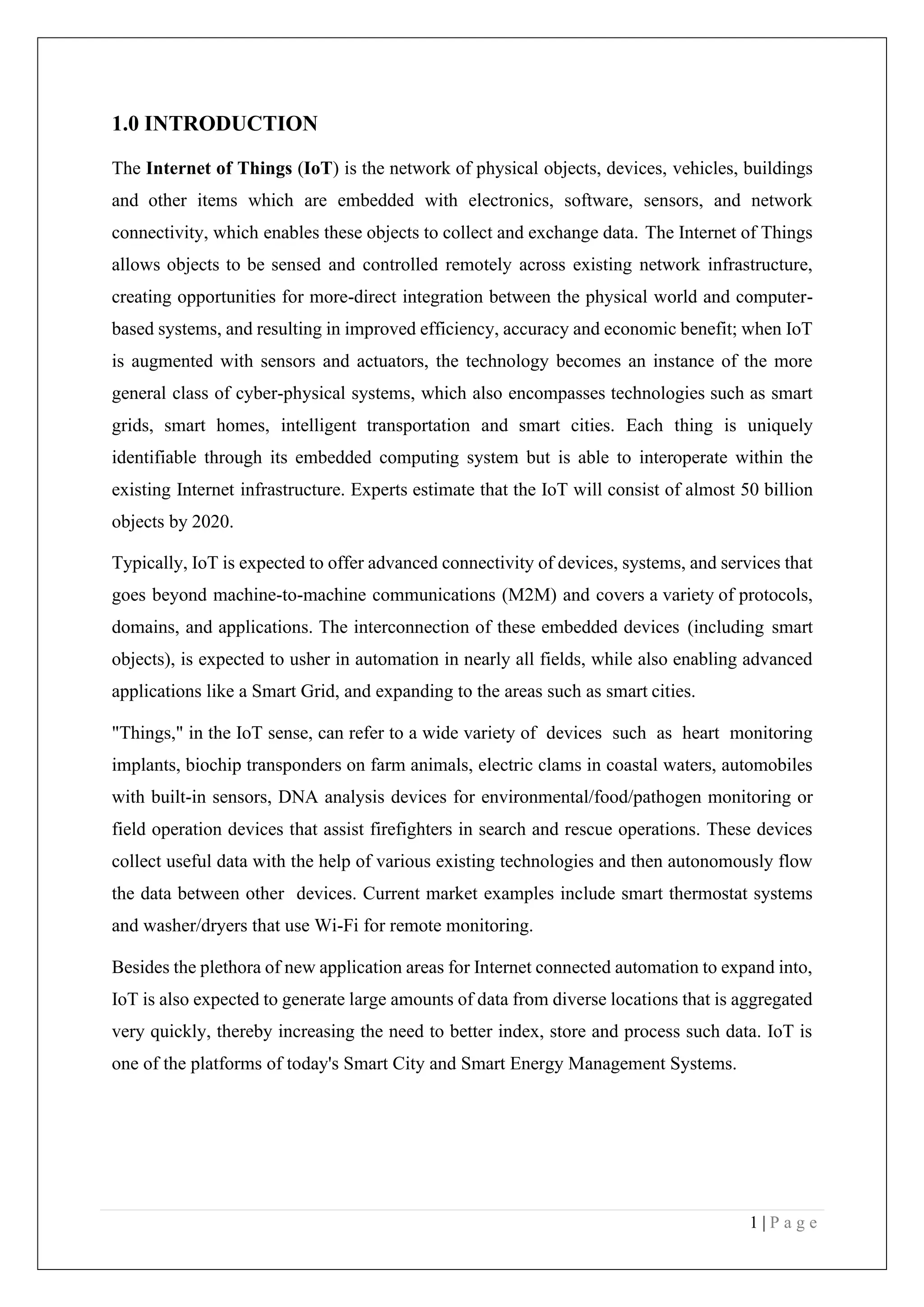
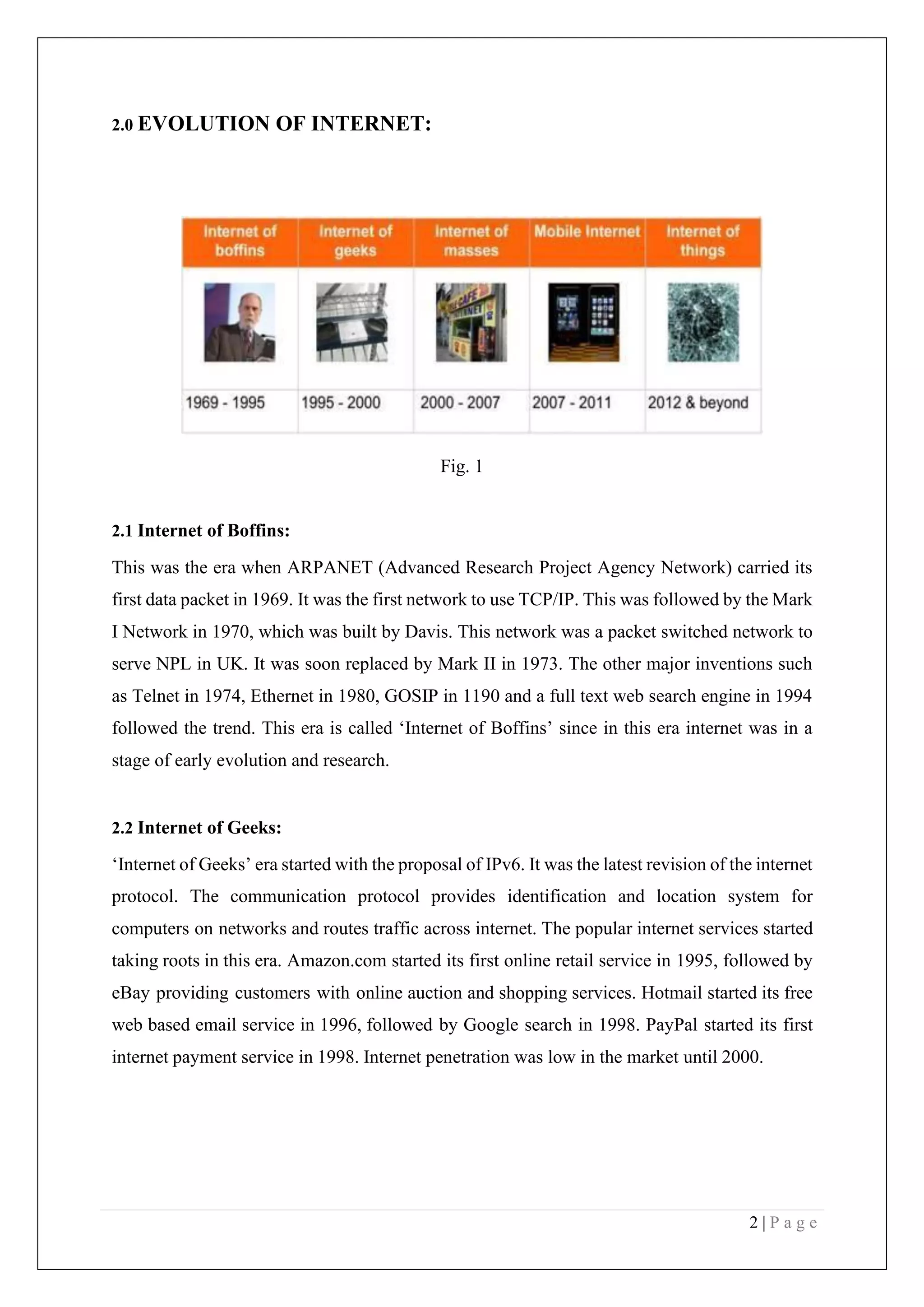








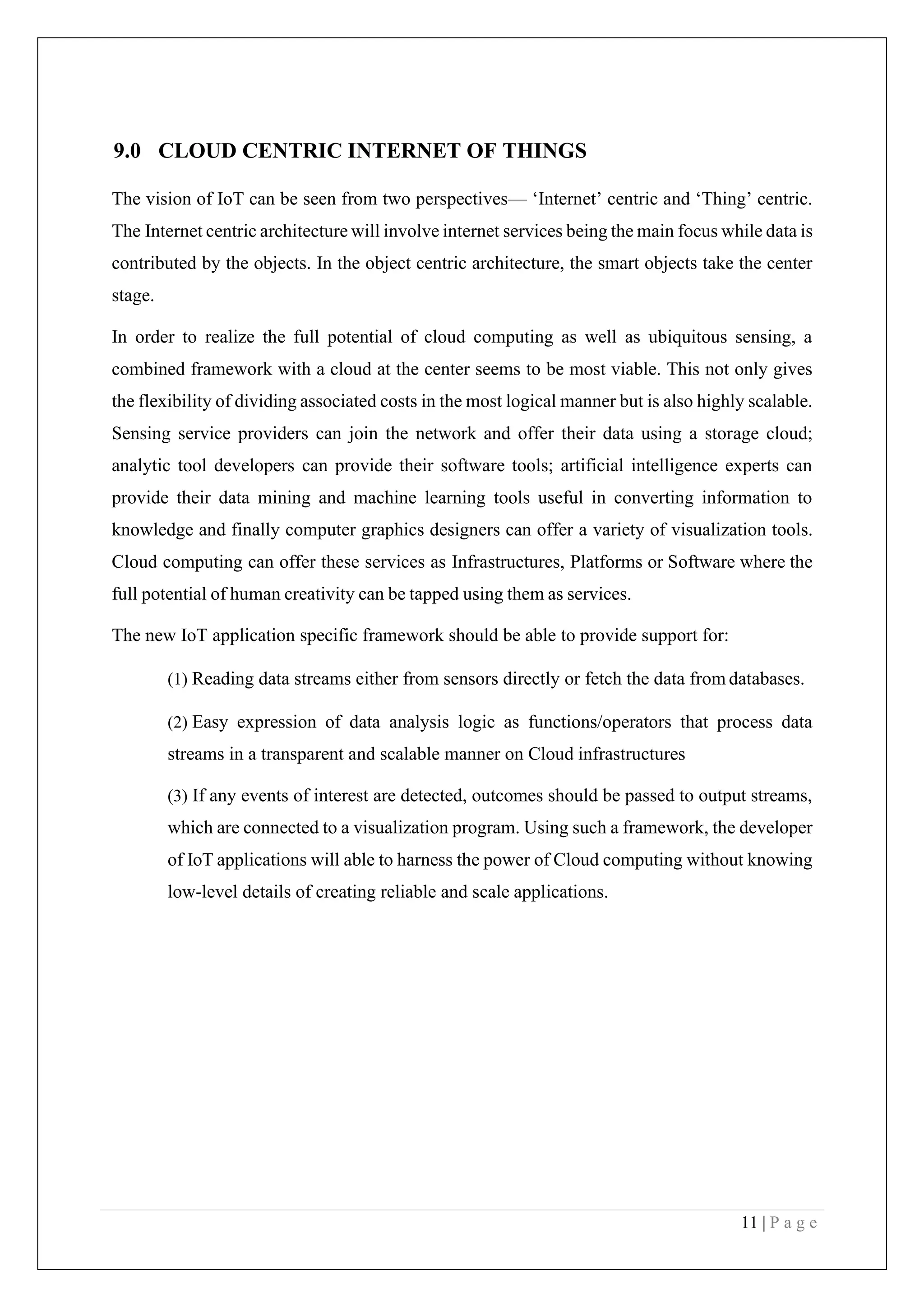

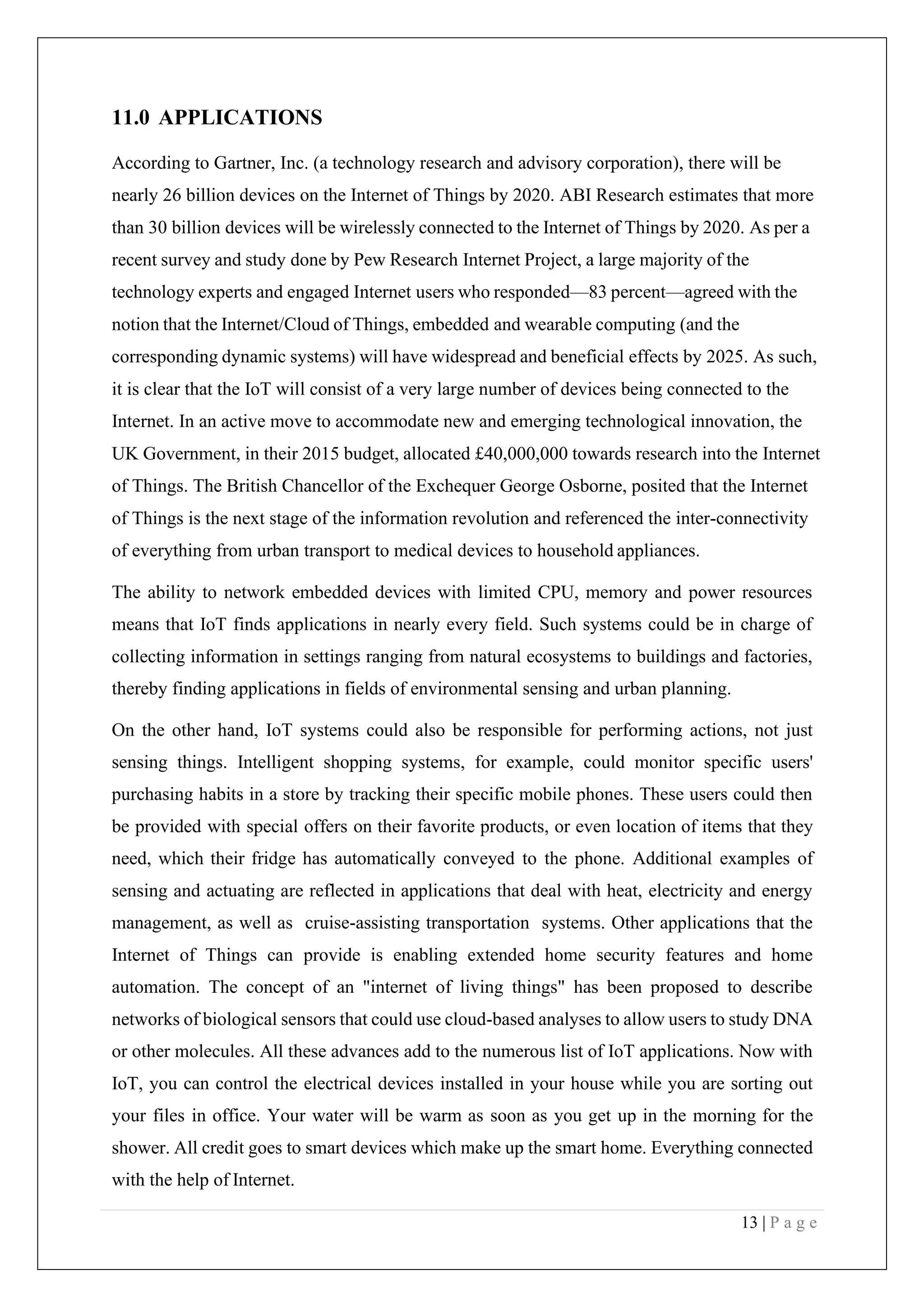
![14 | P a g e
However, the application of the IoT is not only restricted to these areas. Other specialized use
cases of the IoT may also exist. An overview of some of the most prominent application areas
is providedhere. Based on the application domain, IoT products can be classified broadly into
five different categories: smart wearable, smart home, smart city, smart environment, and smart
enterprise. The IoT products and solutions in each of these markets have different
characteristics.
11.1 Media
In order to hone the manner in which the Internet of Things (IoT), the Media and Big Data are
interconnected, it is first necessary to provide some context into the mechanism used for media
process. It has been suggested by Nick Couldry and Joseph Turow that Practitioners in Media
approach Big Data as many actionable points of information about millions of individuals. The
industry appears to be moving away from the traditional approach of using specific media
environments such as newspapers, magazines, or television shows and instead tap into
consumers with technologies that reach targeted people at optimal times in optimal locations.
The ultimate aim is of course to serve, or convey, a message or content that is (statistically
speaking) in line with the consumer's mindset. For example, publishing environments are
increasingly tailoring messages (advertisements) and content (articles) to appeal to consumers
that have been exclusively gleaned through various data-mining activities.
The media industries process Big Data in a dual, interconnected manner:
• Targeting of consumers (for advertising by marketers)
• Data-capture
11.2 Environmental monitoring
Environmental monitoring applications of the IoT typically use sensors to assist in
environmental protection by monitoring air or water quality, atmospheric or soil conditions,
and can even include areas like monitoring the movements of wildlife and their habitats.[61]
Development of resource constrained devices connected to the Internet also means that
other applications like earthquake or tsunami early-warning systems can also be used by
emergency services to provide more effective aid. IoT devices in this application typically span
a large geographic area and can also be mobile.](https://image.slidesharecdn.com/vishal2-converted-191101210533/75/IOT-report-14-2048.jpg)
![15 | P a g e
Infrastructure management
Monitoring and controlling operations of urban and rural infrastructures like bridges, railway
tracks, on- and offshore- wind-farms is a key application of the IoT. The IoT infrastructure can
be used for monitoring any events or changes in structural conditions that can compromise
safety and increase risk. It can also be used for scheduling repair and maintenance activities in
an efficient manner, by coordinating tasks between different service providers and users of these
facilities.] IoT devices can also be used to control critical infrastructure like bridges to provide
access to ships. Usage of IoT devices for monitoring and operating infrastructure is likely to
improve incident management and emergency responsecoordination, andqualityofservice,up-
times and reduce costs of operation in all infrastructure related areas. Even areas such as waste
management can benefit from automation and optimization that could be brought in by the IoT.
11.3 Manufacturing
Network control and management of manufacturing equipment, asset and situation
management, or manufacturing process control bring the IoT within the realm on industrial
applications and smart manufacturing as well. The IoT intelligent systems enable rapid
manufacturing of new products, dynamic response to product demands, and real-time
optimization of manufacturing production and supply chain networks, by networking
machinery, sensors and control systems together.
Digital control systems to automate process controls, operator tools and service information
systems to optimize plant safety and security are within the purview of the IoT. But it also
extends itself to asset management via predictive maintenance, statistical evaluation, and
measurements to maximize reliability. Smart industrial management systems can also be
integrated with the Smart Grid, thereby enabling real-time energy optimization. Measurements,
automated controls, plant optimization, health and safety management, and other functions are
provided by a large number of networked sensors.](https://image.slidesharecdn.com/vishal2-converted-191101210533/75/IOT-report-15-2048.jpg)

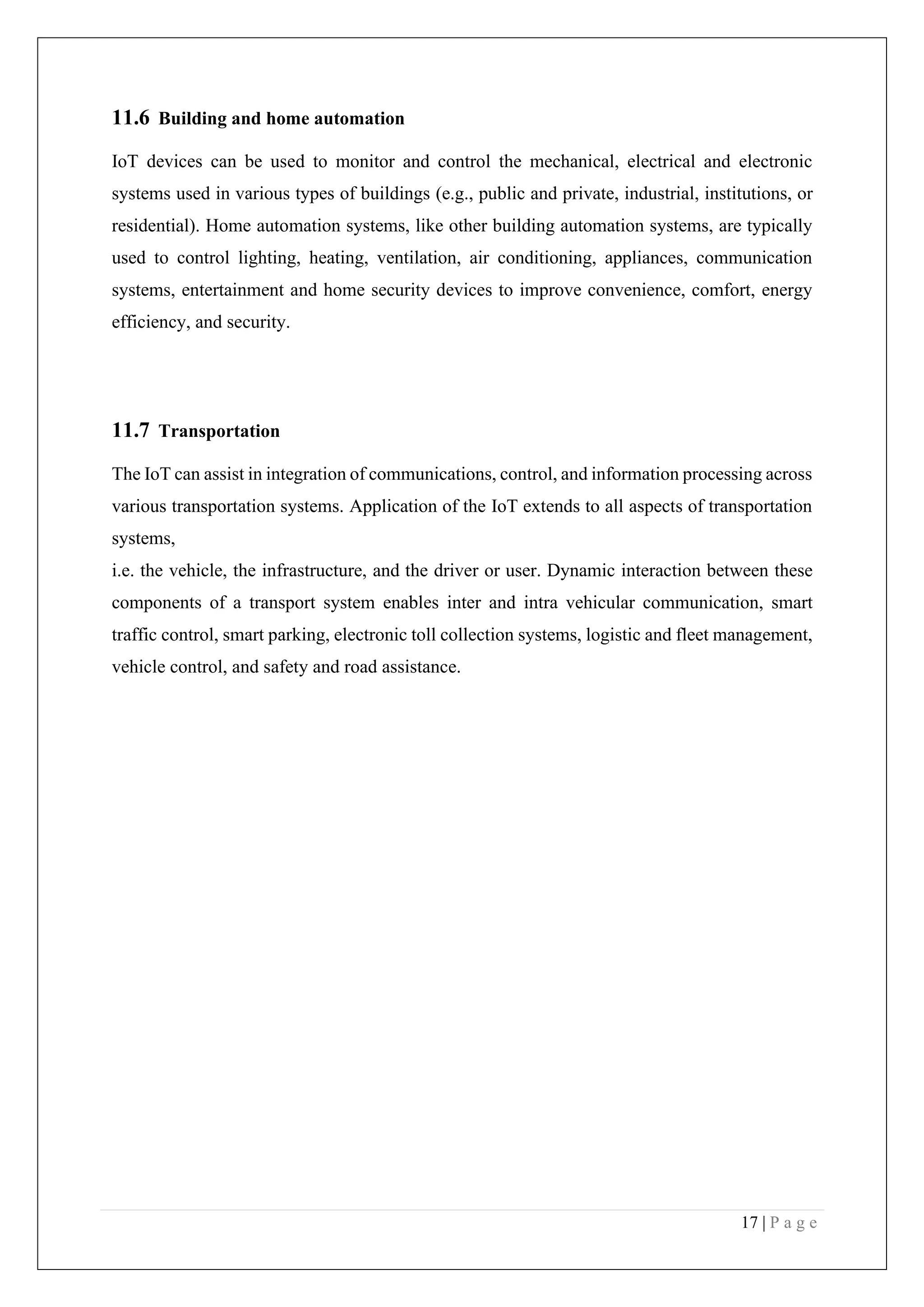

![19 | P a g e
Reference
[1]https://en.wikipedia.org/wiki/Internet_of_Things
[2]www.wired.com/insights/2014/11/the-internet-of-things-bigger/
[3]http://internetofthingsagenda.techtarget.com/definition/Internet-of-Things-IoT
[4]http://www.theinternetofthings.eu/](https://image.slidesharecdn.com/vishal2-converted-191101210533/75/IOT-report-19-2048.jpg)